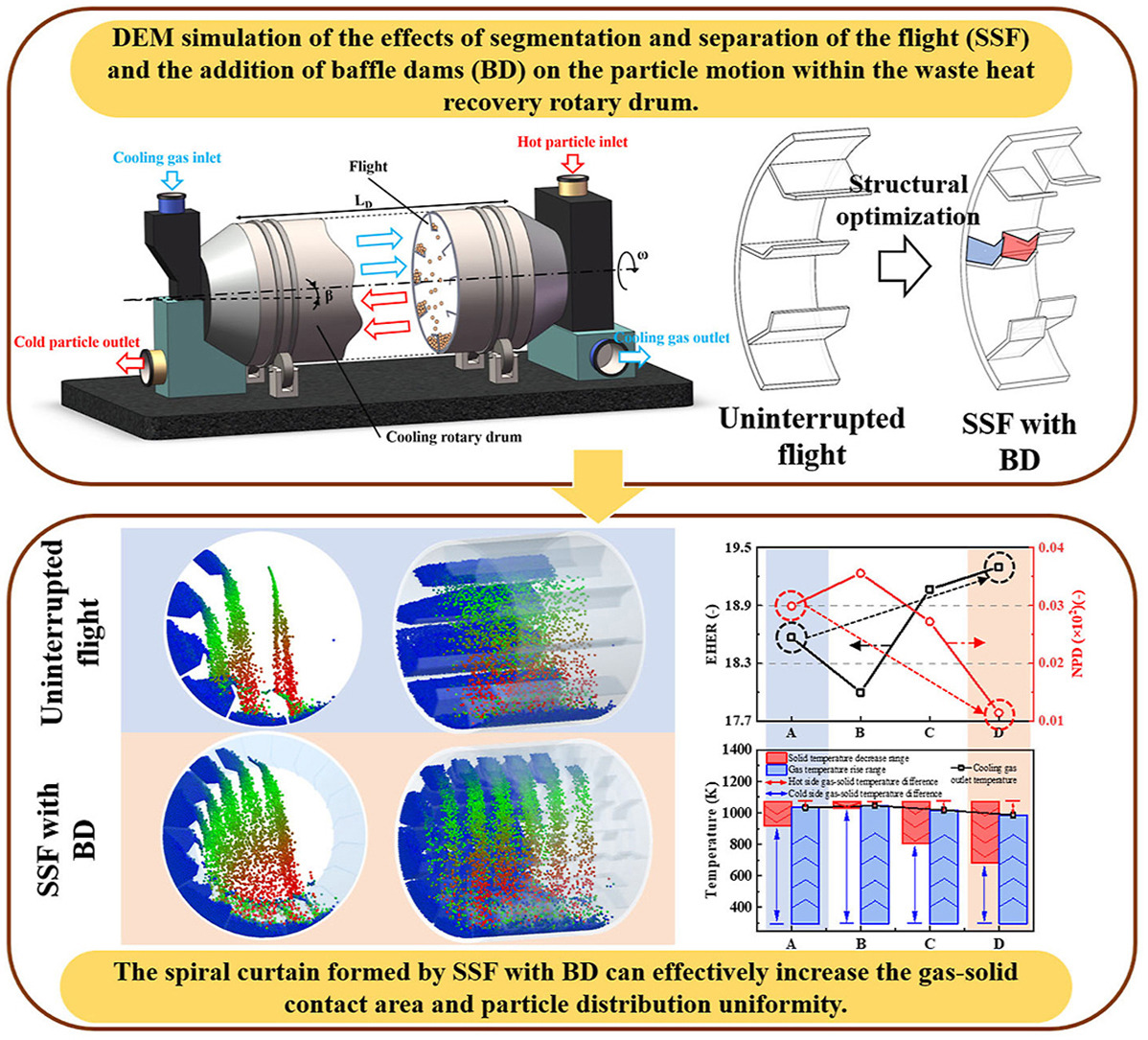• Separated segmented flights with baffle dam were designed for rotary drum.
• Particle motion was analyzed for various flighted drums with DEM.
• Changes in axial velocity and curtain were demonstrated with long drum model.
• Segmentation and damming for flights can improve heat exchange and its uniformity.
In a waste heat recovery rotary drum with flights, particle lifting enhances gas-solid contact and introduces greater complexity to the particle motion. This study proposed strategies such as the segmentation and separation of flights (SSF) and the addition of baffle dams to establish a reasonable distribution of the particle curtain. A long drum model was developed, and DEM was employed to examine the effects of segment length, separation angle of flight, and position, height of baffle dam on particle motion and heat exchange capacity. The heat exchange efficiency of the system under the four special operating conditions was compared. The results showed that SSF enhanced the randomness of particle axial motion, while the development of the long drum model effectively identified the key factors influencing motion. The SSF formed a spiral-shaped particle curtain, exhibiting a high degree of particle distribution uniformity. The installation of the baffle dam enhanced the flight holding capacity and suppressed both transitional particle movement and backflow. With equivalent filling degree, compared to the uninterrupted flight, the SSF with bilateral baffle dam reduced the particle distribution non-uniformity by 61.72 %, while increasing the gas-solid contact area by 3.92 % and the bulk cooling temperature by 1.51 times.

